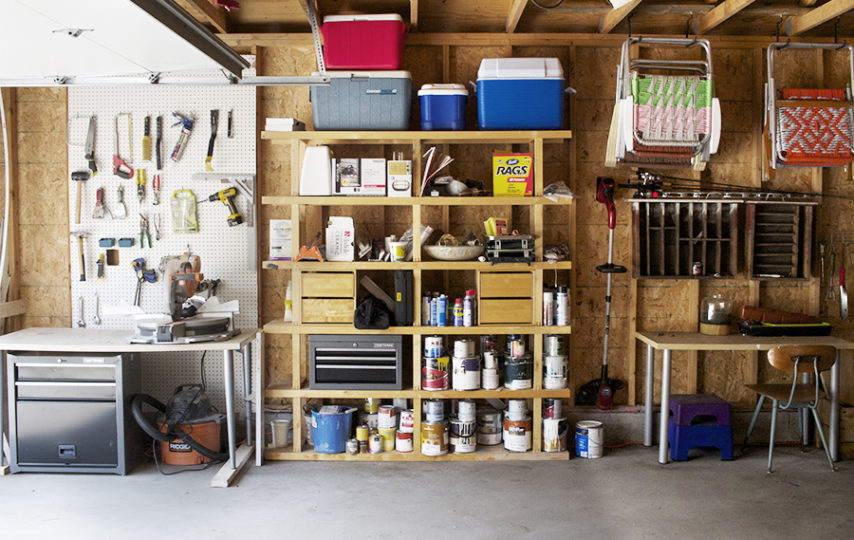Spring is in full flow now, and it’s the perfect time to tackle those outside jobs that don’t seem very appealing during the winter months. Sheds and garages are bound to need a freshen up and sort out after the winter, and spring is ideal, as the weather is good enough to empty the contents of the shed, but it’s not too hot to get stuck into the work at hand. If you’ve been dreading having to spring clean your shed or garage, follow these tips for a stress-free experience.
Why do I need to spring clean my shed or garage?
If you’re wondering whether you could just skip a full spring clean, think again. Unless you’re an extremely organized person, it’s likely that your garage or shed becomes a bit of a dumping ground over the summer months. It’s easy to stick items out of sight to return later to sort them out, then you get distracted, and so the cycle continues.
Over winter, sheds and garages aren’t the nicest places to spend time, unless you’ve got a luxury building with heating! Anything wet or muddy gets left in there to dry out, and it’s surprising how quickly the space can fill up with mud, dirty outdoor clothing, pet blankets, and random detritus that blows in from outside.
The result is that when the weather improves, and you want to get your bike out for a pleasant spring cycle ride, it’s buried under mountains of clutter. Or when you need some tools to complete a DIY job, nothing is where you thought you left it. If rats and mice have found a way in, you might have a much bigger problem of chewed belongings and piles of droppings to clear up. The only solution is to take everything out and get cleaning.
How do I get started?
There are three tricky phases during any major cleaning and tidying task:
- Finding the motivation to get started.
- Getting to the point where you seem to have more mess than you started with.
- Getting to where all the main parts of the task are complete, but you’re left with lots of bits and pieces that you don’t know how to sort.
Getting started requires finding motivation, which you may well have if you’re full of springtime energy. If you’re not, and trying to think of reasons not to start your spring-cleaning task today, try and focus on what you’re going to gain if you get stuck in. Think of all the time you’ll save not having to search for what you want, or move masses of junk to get to the item you need.
There’s also the negative impact of not getting on with your chores because if you keep putting something off when you know you should be doing it, stress can build up until you feel worse for having avoided the spring cleaning than if you’d just forged ahead ages ago. If you have friends or family members who could help, ask them to give you a hand, as sharing this kind of task eases the burden. You’ll experience a sense of relief at getting started, and satisfaction with getting an vital task underway.
When you’re ready to start, here’s how to manage your project for the most stress-free spring clean ever:
- Clear out. Don’t try and sort everything out in situ; you’ll just get confused and frustrated. Take everything that’s filling the floor space outside, and put each item in a pile according to what needs doing with it. You need a big bag for all the rubbish, another for anything that can be recycled, and another for clothing and other items that need washing. Look at all the items you take out, and be selective with what you keep. If you never use a particular item, it could be sold or donated to charity rather than cluttering up your space.
- Inspect the building. Does your shed or garage need any repairs? Check for leaks, damp patches, peeling paint, rotting wood, crumbling floors, dodgy electrics, plants that are growing in through the eaves, or holes where vermin could get in. If your shed could do with a coat of preservative, or your garage needs a lick of paint, now’s a good time to get your paint brush out too. Brush out any dirt and cobwebs with a big broom, wearing a breathing mask if there’s a lot of dust.
- If you have a rat or mouse problem, you’ll smell it and probably see the droppings. Don’t handle anything contaminated by rats and mice with bare hands, always use thick gloves, and either dispose of or sterilize anything they’ve been in contact with. If you can, jet wash or steam clean the inside of the building to clean away any trace of vermin, and makes sure you seal any holes.
- When the shed’s dry, repaired and painted, you’re ready to start putting everything back. Take a moment to evaluate what needs to go back in the space. Do you need everything? Could some things be stored in the roof space out of the way? What do you need to get to easily and quickly? Organized storage is essential if you want to keep your shed or garage neat and tidy, so browse this site for ideas on storage solutions for tools and other items.
Putting everything back is one of the most enjoyable stages of the process. When you pulled everything out you might have had that moment of thinking this looks like an impossible task, but in just a couple of hours you’ll be over that hump and able to see how great the finished result will be.
Now you’ve put everything away neatly where you can find it easily, and you feel a warm glow when you look at your finished workspace. If you do have any small items left over, you don’t need to spend hours sorting through them; just put them in a storage container, and you’ll know where to check if you need any random bits and bobs.
Spring cleaning your shed needn’t be a headache, and the finished job will be well worth the effort.





